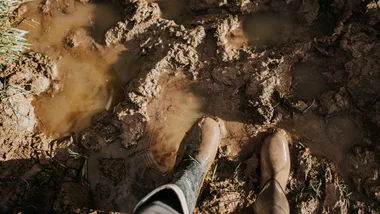A recent spike in Legionnaires’ disease cases has raised concern in Sydney’s CBD, with six people diagnosed after spending time in the area over the past three weeks.
While Legionnaires’ disease is rare, health officials are advising anyone who has been in the city centre recently to stay alert for symptoms. NSW Health is working closely with local authorities to investigate potential sources, particularly cooling towers, which can harbour the bacteria.
If you’ve visited the CBD in the past ten days, here’s what you need to know to stay safe and protect your health.
What is Legionnaires’ disease?
Legionnaires’ disease is a type of pneumonia (lung infection) caused by a bacterium called Legionella pneumophila. This bacterium naturally exists in freshwater environments like lakes and streams, but the danger arises when it grows in artificial water systems.
Once contracted, Legionnaires’ can be life-threatening if not treated promptly, especially for people with weakened immune systems, older people, or those with a chronic lung condition.
A milder illness, also caused by the same bacteria, is known as Pontiac fever.

Why is it called Legionnaires’ disease?
The disease was first identified in 1976 after an outbreak at an American Legion convention in Philadelphia. The attendees were referred to as Legionnaires, and the disease was named after them — hence Legionnaires’ disease.
How do you catch Legionnaires’ disease?
Legionnaires’ disease is not contagious, as in, you can’t catch it from other people. Instead, it’s usually contracted by inhaling contaminated water droplets.
The bacteria which cause the disease thrive in warm, stagnant water. This could be from air conditioning units (in particular, large or industrial ones), hot tubs and spas, showers and taps, fountains, and water storage systems.
The risk increases when these systems are not properly maintained, allowing the bacteria to multiply.
When it comes to pools, particularly indoor or public pools, they can be a potential source of Legionella bacteria, but the risk is generally lower compared to other water sources like hot tubs or cooling towers. This is because chlorine used in pools usually helps kill bacteria, but if levels are too low, the risk of Legionella growth increases.
What are the symptoms of Legionnaires’ disease?
Symptoms usually show up two to ten days after exposure to the infected water source and can range from mild to severe.
The usual symptoms include:
- High fever and chills
- Cough (which may be dry or produce mucus)
- Shortness of breath
- Muscle aches
- Headaches
- Nausea, vomiting, diarrhea (less common)

How is Legionnaires’ treated?
As it is caused by a bacterium, it is treated with antibiotics. Most people recover fully with proper medical care, but severe cases may require hospitalisation, oxygen therapy, or intensive care.
If left untreated, the disease can lead to serious complications or even be fatal.
How long does it take to recover?
Recovery from Legionnaire’s disease can vary depending on the severity of the infection, the person’s overall health, and how quickly they received treatment.
If it was a mild to moderate case, people may start feeling better within a few days of starting antibiotics. However, a full recovery can still take two to three weeks. If the case was more severe, it may take several weeks to months to fully recover.
However, even after the infection clears, many people can experience lingering symptoms like fatigue, weakness, mild cough, and shortness of breath for weeks or even months.

How can you protect yourself and your family from Legionnaires’ disease?
While you can’t completely eliminate the risk, you can reduce it by being aware of how the bacteria spread — and how to avoid contaminated water sources. Older adults and people with weakened immune systems should be particularly cautious around spas, humidifiers, or any place with warm, recirculated water.
At home:
- Flush taps and showers if they haven’t been used in a while (especially after holidays).
- Clean and descale showerheads regularly — mineral buildup can trap bacteria.
- Maintain hot water systems: keep hot water storage above 60°C and taps delivering at least 50°C to prevent bacterial growth.
- Use cold water for drinking: Legionella can grow in warm, stagnant water.
- If you use a private pool, maintain proper water treatment — regularly check chlorine levels, pH, and clean the pool filters.
With spas and hot tubs:
- Only use spas that are properly maintained and regularly disinfected.
- Avoid public spas or hotel hot tubs that smell odd or look poorly maintained.
At public spaces:
- Ensure that public pools are well-maintained and regularly disinfected.
- Building managers should ensure regular servicing of cooling towers, air conditioning units, and plumbing systems.
- Additionally, they should ensure that public pools are well-maintained and regularly disinfected.



